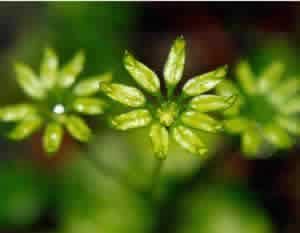Coptis Coptis spp
- Common Names
- Coptis , Chinese goldthread, Huang Lian, Figwortflower,Canker Root
- Botanical Name
- Coptis spp
- Family
- RANUNCULACEAE
Medicinal Uses & Benefits of Coptis
![]() How to Use|
Side Effects |
Plant & Garden|
How to Use|
Side Effects |
Plant & Garden|
- Medicinal Uses: * Chinese
* Dental/Oral Care
* Immune
* Infection
- Properties: * Anti-inflammatory * Antibacterial * Bitter * COX-2 Inhibitor * Vermifuge
- Parts Used: root
- Constituents: berberine, coptisine
How to Use: Coptis
Coptis root is used in much the same manner as other berberine containing herbs; barberry, goldenseal, and Oregon grape root. These herbs are used in treating and preventing infections and for supporting the immune system. 1The anti-inflammatory, antibiotic and anti-tumor effects of berberine are well documented, and Coptis chinensis , or Chinese goldthread, has been the subject of much cancer research in Japan and China.
Preparation Methods & Dosage :Coptis is available in capsules, ointments, powders, and tinctures. It can be used to make compresses and poultices. When using coptis, it is very important to pay close attention to dosage. Small amounts of coptis stimulate the brain and result in alertness, while the use of large amounts result in drowsiness. Similarly, small doses of coptis increase blood pressure, but large doses lower it. 1
Traditional Chinese Medicine
 Coptis chinensis is used in TCM, and is better known in Asia than in North American herbalism that relies on native herbs like goldenseal.
Coptis chinensis is used in TCM, and is better known in Asia than in North American herbalism that relies on native herbs like goldenseal.
Plant Description
Coptis species are native to both Asia and North America. The root is harvested in autumn and used in herbal medicine much like its relative goldenseal. Species native to North America are considered endangered and should be carefully wildcrafted with an effort made to propagate the species.
Regional Traditions :Traditional Chinese Medicine *
- Coptis teeta known as mameera in India
- Coptis chinensis Chinese goldthread
- Coptis trifolia, syn Coptis groenlandic Threeleaf Goldthread













